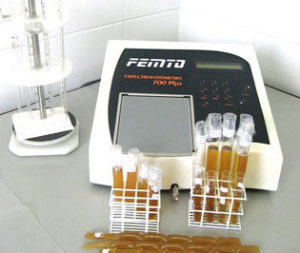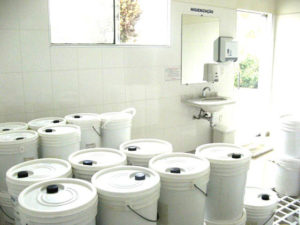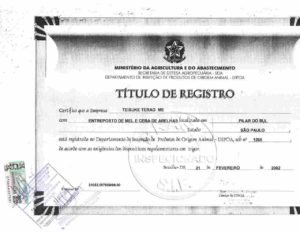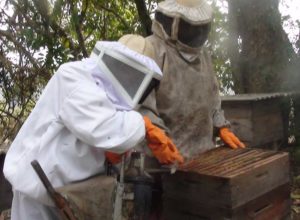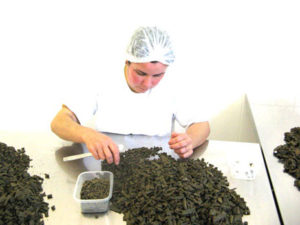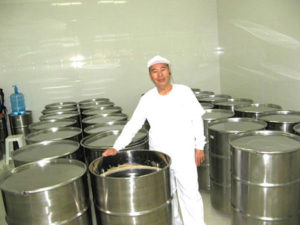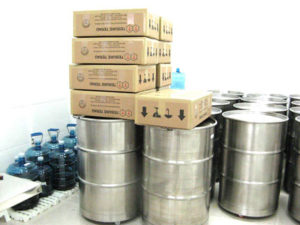We harvest the green propolis at a high altitude in Brazil’s Minas state that is placed higher than 800 meter elevation. In order to not get stung by honeybees when going to the hive box, complete protection is needed. To not negatively influence environmental contamination, the green propolis are made with honeybees that are placed in a wide spread natural place. The hive boxes are surrounded by many pastures.
Around these hive boxes, Baceharis; green propolis’s raw material, are growing naturally. These honeybees are gathering shoots from the Baceharis and mix it with its own saliva and pollen and complete the production of green propolis.
There is a high quality plant called, Alecrim, and in Brazil, there are over 400 types. Within the Alecrim, there is a seed called Baceharis (Baceharis Dracun Culifolia) which is only growing at a certain place in Brazil. This Baceharis is the raw material of “green propolis”. This green propolis that from Baceharis has the best quality and a very high component with a very great effects on the health.
When harvesting the propolis, we try not to agitate the honeybees to not get attacked. We keep them calm by using a smoke machine; a machine that puts jute bags and straws that are on fire into the machine and add in air. This makes the simple come out and calms down the honeybees.
Once all the honeybees has calmed down, we start our harvesting. We use knives and cutters and harvest the propolis that are in the entrance of the hives. If the shape of the propolis gets destroyed by a bit, the quality of the propolis will be evaluated to be very low; therefore, we need to be very careful when harvesting them.
After harvesting, the honeybees will make propolis once again to fill the empty spot. We are very grateful to the honeybees for making propolis for the health of human bodies!
This very high quality propolis is green propolis. It has an outstanding green color to it and it is made organically. Green propolis cannot be made artificially; therefore, this green propolis is a valuable treasure.
